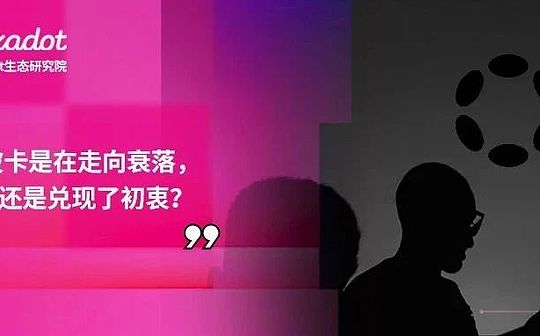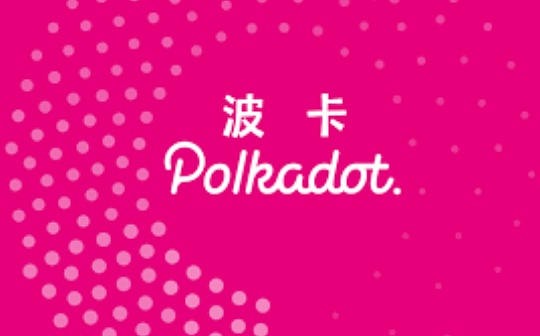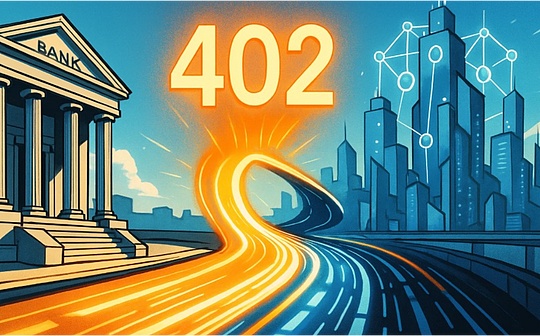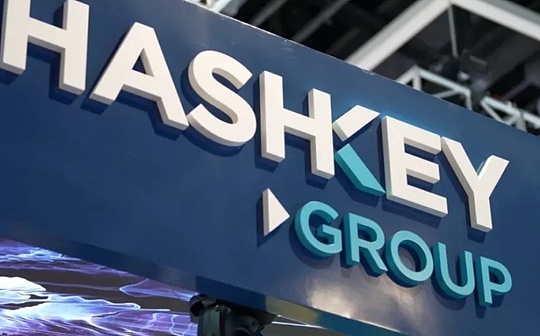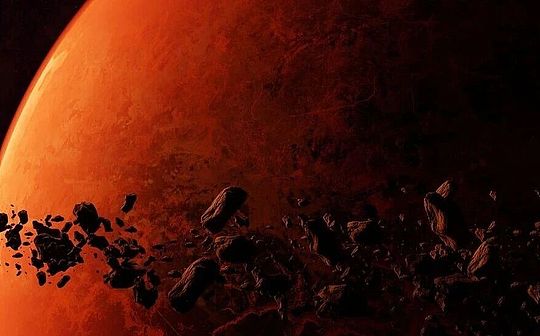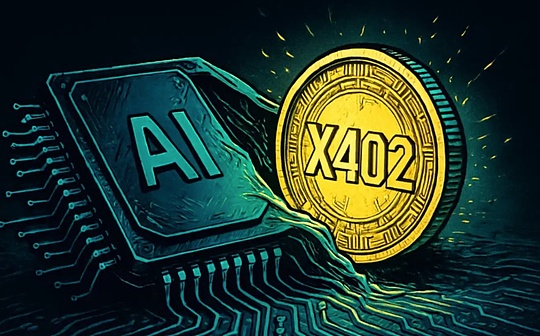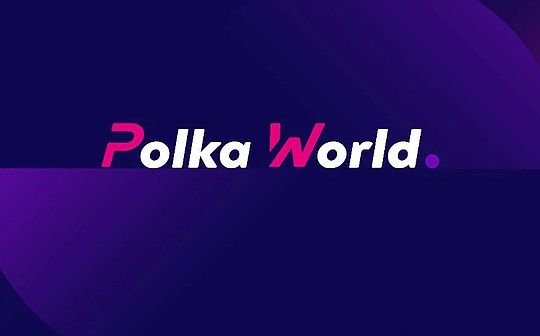
At the Polkadot Decoded conference in Copenhagen last year, Gavin Wood, the founder of Polkadot, delivered an important keynote speech on Polkadot’s future. This is calledPolkadot 2.0Essence
This new vision aims to make Polkadot closer to one of the original ideas of Ethereum, that is, “World Computer”, the goal provides a wide range of computing capabilities.The robustness and security of the system.
With this new direction, Polkadot 2.0 opens a new path, which can fully release the power and potential of the relay chain and its parallel chain!Polkadot 2.0 emphasizes flexibilityEspecially in distributed computing, the old one -size -fits -knife model is outdated.Instead, Polkadot 2.0 supports a variety of computing environments, from temporary chains (may be used for short -term or specific tasks) and high -capacity chains (can process a large amount of transactions and data).At the same time, the inherent advantages of the Polkadot framework can be used, such as security, scalability and interoperability to optimize the performance and functions of these different types of chains.
Current Polkadot’s operation method and improvement opportunity
As GAV explained, the current model originated in 2016, when the first Polkadot White Paper was released.
Saber, the process of dividing a single blockchain into multiple homogeneous chains will attract significant attention at that time.It is regarded as the key element of Ethereum 2.0 and is widely considered to be a solution to scalability challenges.However, the later route map of Ethereum turned to ROLLUP -based methods.
Polkadot has improved the concept of fragmentation of the foundation, introduced flexible heterogeneous shards, and eventually evolved into a parallel chain.Polkadot aims to promote a environment, where the shards can be diversified according to various applications and use XCM (Polkadot’s cross -chain message standard) to simplify their communication between them.
On this basis, POLKADOT has developed into the Polkadot 1.0 we see today.However, even with these progress, Gavin Wood pointed out some problems in the current architecture:
Not flexible parallel chain auction modelThis model may hinder the participation of small innovators, and is more conducive to a large team with richer resources.
All the “core” resources during the entire lease period are allocated to a single parallel chain, which leads toInefficientEssenceIf the blocks of the parallel chain are not filled, the verifications and teams will waste resources.
As often occurred during the development process, the final product may be different from the initial expectations.As GAV said, “It turns out that when you build it, you will realize that what you build is completely different from what you first tried to do. Usually, if you are lucky or have a great team of teamSupport you, you can create a better thing than you first built. “
The parallel chain is the focus of the Polkadot vision, but they are too “Chain“”.
In the process of designing and developing Polkadot 2.0, two important concepts in computer science need to be taken into account:Abstraction and generalizationEssence
Polkadot 2.0: Use Elastic Cores to meet different calculation requirements
The main innovation of Polkadot 2.0 is to change the way to distribute security resources in the blockchain ecosystem.In the past, each parallel chain was regarded as a unit similar to the CPU core and has certain computing power.This computing power represents the security level that the chain can withstand, just like the performance of a smartphone, high and low.
However, with the launch of Polkadot 2.0, we will no longer staticly allocate a core for each chain.Instead, we are all using a elastic, tailor -made security resources allocated according to the current demand.
>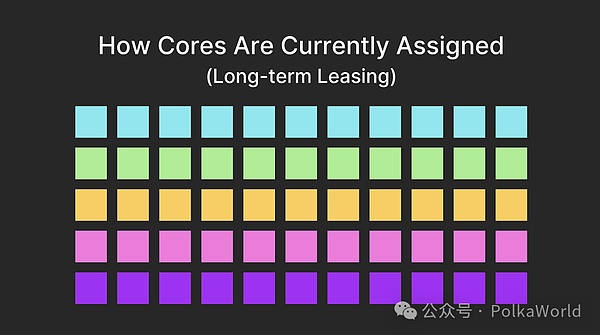
How is the current core allocated
Image source: PPT of GAV in Polkadot Decoded 2023
For example,Application chain(AppChains) Sometimes the throughput that may be needed is not enough to have a complete core throughput, so they will “skip” several blocks and give them to other users.In other cases, they may share a core with multiple application chains, or even need to use multiple cores at the same time when demand is high.
>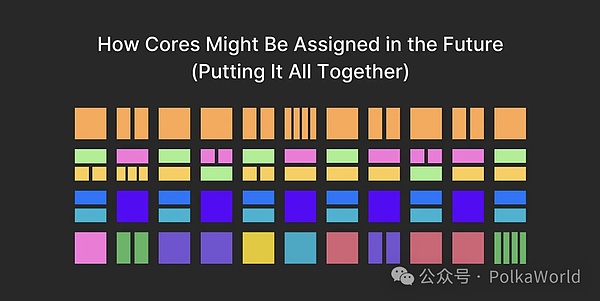
How to allocate the core in Polkadot 2.0 in the future
Image source: Gav’s speech on Polkadot Decoded 2023
The adaptability of this resource allocation echoes the concept of “flexible/elastic core”.Here, Tansi plays a key role.TANSSI simplifies the workflow of developers, which allows developers to design and realize applications that adapt to elastic cores.
Rich and secure cross -chain interoperability: Polkadot’s new vision
Polkadot 2.0 surpassed the independent blockchain and imagined a more interconnected and flowing blockchain ecosystem.Gavin uses a napkin paper to explain this. It compares the existing relay chain+ parallel chain model with the core and application “mesh” connection. These cores and applications are classified to specific to specificIn the field.These areas maintain their uniqueness to ensure professionalism, but now they are complicatedly interconnected.
>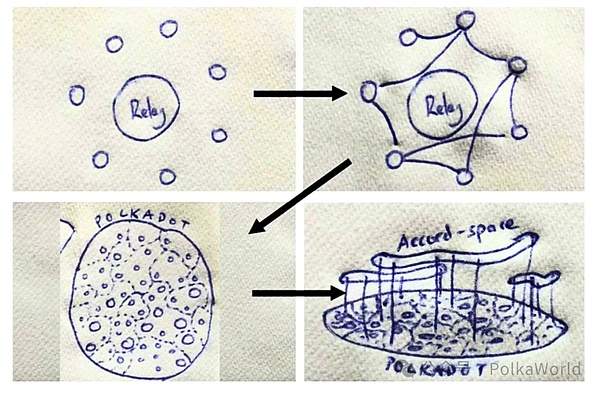
Gavin Wood’s draft drawing of Polkadot 2.0 function description
Image source: Gav Wood’s speech on Polkadot Decoded 2023
In order to enhance this connection, Polkadot 2.0 is launching an improved consensus mechanism that enhances security, trading route, parallel chain performance, and overall user experience.In addition, in order to promote communication between different fields, “Accords“It has been introduced. On the basis of the XCM model, ACCORDS has further formulated a set of shared” laws “to define the interaction between chain.
Emphasize the importance of decentralization of the community, the governance of the Polkadot 2.0 is positive to a DAO -like structure transition, and emphasizes the indispensable role of the community in truly decentralization.
From parallel chain to application chain to container chain: TANSSI’s role in Polkadot 2.0
Looking forward to the future of Polkadot, it is clear that flexibility is the core.Polkadot 2.0 is introducing a new security market, marking the transformation of traditional parallel chain slot competition.This change is reminiscent of the familiar cloud platform, allowing large companies and small teams to flexibly choose resources according to demand.
In this continuous development pattern,The importance of TANSSI as an application chain infrastructure agreement is not doubtfulEssencePolkadot 2.0, with its democratic core (Core) technology and reduced application chain startup cost, requires a powerful and user -friendly technical support -this is exactly provided by Tansi.
Imagine a developer keen to introduce a novel financial application on the application chain.With Tansi, then they don’t need to pay too much attention to the infrastructure of the bottom, and they can focus on designing their unique applications.One of the core features of TANSSI is containerchain protocol, which provides ready -made solutions for the application chain for block generation, data usability, cross -chain message transmission and other integration.Such a simplified infrastructure has accelerated the deployment timetable, which is shortened from one month of development to less than one hour.This efficiency is not only conducive to market entry, but also allows developers to have more time to improve their applications, enhance user experience, and cultivate active user communities.
In short, Tansi is destined to become the first choice solution for application chain development, just like game developers prefers Unity or Unreal Engine platform.It promises to provide a seamless, efficient and user -friendly experience to promote the vision of Polkadot 2.0 to achieve a more interconnected and adaptable blockchain ecosystem.
When can we see Polkadot 2.0?
According to the previous web3 foundation’s Joe sharing, CoreTime will start at Kusama at 2024 Q1 and 2024 Q2 at Polkadot.At present, we have seen that CoreTime has been sold on Rococo!Polkadot 1.2 will also be launched. The biggest new feature is to start Coretime on Kusama!
Recently, we have also seen the community began to discuss the pricing of Coretime.See here to discuss the initial pricing settings of the “Pokka 2.0 batches of Coretime.”
Another exciting progress is that Polkadot Fellowship has votedPass the referendum No. 74IntersectionThis means that when starting the CoreTime sales, the income is built -indestroy
Polkadot’s development has never stopped, and many decentralized problems that build the application chain have been successfully resolved.Decentralized collectors, light clients, and OpenGOV -All these foundations are necessary for building an elastic (or unstoppable) network.
For Polkadot 2.0, the focus will be placed on the web3 application case of the next trillion US dollar level. Tansi will help to complete some of its work here.
If you want to know how TANSSI is innovatively applied to the chain space.Pay attention to the latest developments of TANSSI and add their communities on Discord, Telegram, and Twitter.

